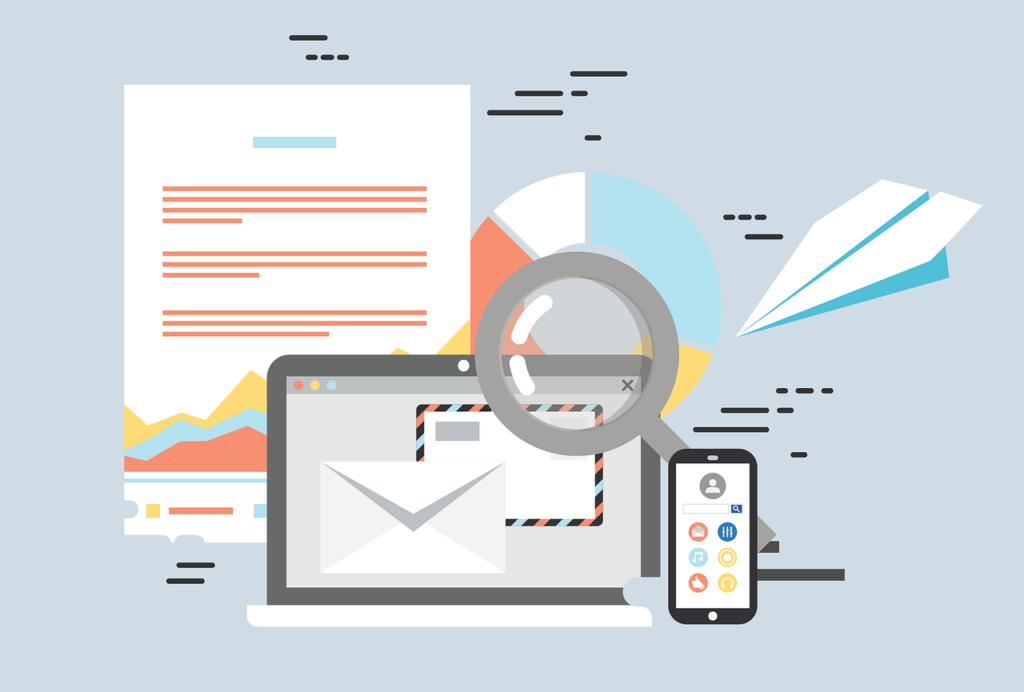
In today’s fast-paced digital landscape, choosing the right marketing channel for your business can feel like finding a needle in a haystack. With countless options available—ranging from social media and email to SEO and pay-per-click ads—it’s easy to become overwhelmed. The success of your campaigns hinges on this crucial decision. Selecting the appropriate channel not only helps you reach your target audience effectively but also maximizes your return on investment.
So how do you navigate this complex terrain? Understanding who you’re trying to reach, what you’re offering them, and where they spend their time is key. Join us as we break down the essential steps needed to identify the perfect marketing channels that will elevate your brand and connect with customers like never before!
The Importance of Choosing the Right Marketing Channel 2024
Selecting the right marketing channel can make or break your business strategy. It’s not just about being present in multiple places; it’s about being in the right place where your audience is active.
When you choose effectively, you increase engagement and drive conversions. The right channel allows for tailored messaging that resonates with potential customers.Mistakes in this area can result in inefficient use of resources and lost chances.
Moreover, each marketing channel offers unique advantages—some excel at building brand awareness while others are better suited for direct sales. Understanding these nuances enables deeper connections with your audience.
Investing time into selecting the proper channels ensures that every marketing dollar counts. This strategic choice sets the foundation for sustained growth and long-term success as you navigate an ever-evolving marketplace.
Understanding Your Target Audience

Understanding your target audience is crucial for effective marketing 2024. Knowing who they are guides your messaging and channel selection.
Start by creating detailed buyer personas.
Take into account factors such as age, gender, income, and education level. These attributes help pinpoint their needs and preferences.
Next, delve into psychographics. What motivates them? What challenges do they face? Understanding their interests can inform how you communicate with them.
Don’t forget to analyze where your audience spends their time online or offline. Are they active on social media platforms or more receptive to email campaigns?
Conduct surveys or engage in conversations to gather insights directly from potential customers. This feedback can be invaluable in tailoring your approach.
Being attuned to the nuances of your audience ensures that every marketing effort resonates deeply with them. It sets a firm foundation for choosing the right marketing channel for success.
Analyzing Your Products/Services
When choosing the right marketing channel, a deep dive into your products or services is essential. Each offering has unique characteristics that can influence which channels will resonate best with potential customers.
Consider what makes your product stand out. Is it premium quality, affordability, or innovative features?
Understanding this helps tailor your messaging for each platform 2024. For example, visual platforms like Instagram might suit visually appealing products better than text-heavy ones.
Next, assess who benefits most from your service. Are they businesses looking for efficiency or consumers seeking convenience? This insight guides you toward channels where those audiences spend their time.
Don’t forget to analyze customer feedback and reviews too. They reveal what aspects of your product matter most to users and can inform how you position them across various marketing strategies.
Researching the Different Marketing Channels Available

Exploring different marketing channels is crucial for your business’s success. Each channel offers unique opportunities to reach potential customers.
Begin by exploring digital channels such as social media, email, and search engines.
. These avenues allow for targeted advertising and direct engagement with audiences.
Traditional media, such as print ads or television spots, still hold value depending on your target demographic. Consider how these methods align with your brand image.
Don’t overlook niche channels either. Influencer partnerships or local community events can provide personalized connections that resonate well with specific groups.
Research the effectiveness of each option in relation to industries similar to yours. Analyze case studies and trends to gain insights into what works best.
Keep an eye on emerging channels as technology evolves rapidly. Being open-minded about new strategies could lead you to untapped markets where your competitors aren’t yet present.
Weighing the Pros and Cons of Each Channel 2024
When selecting a marketing channel, it’s essential to weigh the pros and cons of each option. Each channel presents unique advantages that could significantly impact your strategy.
For instance, social media offers vast reach and engagement opportunities. It allows for real-time interaction with potential customers but can be time-consuming to manage effectively.
Email marketing is another strong contender. It’s cost-effective and targets specific audiences directly. However, if not executed well, it may end up in spam folders or ignored entirely.
On the other hand, traditional advertising provides credibility and broad visibility but can require substantial investment without guaranteed returns.
Search engine optimization (SEO) builds organic traffic over time; however, results are often slow to manifest.
By carefully analyzing these aspects, you can identify which channels align best with your business goals while understanding inherent challenges.
Considering Your Budget and Resources

When exploring marketing channels, your budget and resources play a pivotal role. It’s essential to evaluate how much you can invest in each channel without straining your finances.
Some channels require significant upfront costs, while others are more cost-effective. For instance, social media advertising may fit within a tighter budget compared to traditional print ads.
Assess the tools and personnel you currently have. Do you need additional training or software? If you’re short on time or expertise, outsourcing could be an option but will increase expenses.
Keep an eye on The Best potential return on investment (ROI). A channel that seems expensive at first might yield higher returns if executed well.
Always remember that flexibility is key. Your financial situation may change, so remain adaptable in your marketing strategy as new opportunities arise.
Implementing a Multi-Channel Implementing a multi-channel strategy can significantly enhance your marketing initiatives.
By engaging various channels, you increase your likelihood of reaching a broader audience.
Each channel offers distinct advantages that can complement one another.
Consider using social media alongside email marketing. This combination allows for direct engagement while nurturing leads through regular updates and personalized messages.
Don’t forget about content marketing, either. Blog posts or videos shared on multiple platforms can drive traffic back to your website.
Moreover, track how each channel performs individually and collectively. This knowledge allows you to grasp what appeals to your audience.
Flexibility is key as well; adjust your strategy based on real-time data and feedback from customers across different touchpoints. A seamless experience will keep potential clients engaged throughout their journey with your brand.
Measuring Results and Adjusting Strategies
Measuring results is crucial in determining the effectiveness of your chosen marketing channel. Utilize analytics tools to track key performance indicators (KPIs) specific to each channel, such as engagement rates, conversion metrics, and return on investment (ROI).
Regularly review this data to identify trends and patterns. If a specific strategy isn’t producing the desired outcomes, be ready to modify your approach. Minor adjustments can lead to considerable enhancements.
Engaging with customer feedback also offers insights into how well your message resonates. Surveys or social media polls can provide real-time responses about your campaigns.
Moreover, staying agile allows you to pivot quickly when market dynamics shift. Embrace an iterative approach where testing new ideas becomes part of the routine. This adaptability ensures that you’re not just measuring success but actively optimizing it for better outcomes over time.
The Role of Testing in Choosing the Best Marketing Channel
Testing is an essential part of selecting the best marketing channel. It allows businesses to gather real-time data and insights on what works and what doesn’t.
By running targeted campaigns across multiple channels, you can evaluate performance metrics like engagement rates, conversion rates, and ROI. This hands-on approach reveals which channels resonate most with your audience.
A/B testing is particularly effective in this process. Experimenting with different messages or visuals across various platforms helps fine-tune your strategy. You’ll discover not just where to invest resources but also how to craft content that captivates.
Moreover, regular testing fosters adaptability. The digital landscape evolves rapidly; consumer preferences shift continuously. Staying agile through ongoing tests ensures your marketing efforts remain relevant and impactful over time. Embrace the trial-and-error mindset for optimal results as you navigate the diverse world of marketing channels.
Conclusion: Making an Informed Decision for Your
Choosing the right marketing channel for your business is a crucial step in achieving success. It requires careful consideration of various factors, including your target audience, product offerings, and available resources. By understanding these elements thoroughly, you can make informed decisions that align with your overall business goals.
Analyzing different marketing channels will empower you to identify which ones resonate most with your audience. Each channel has its unique advantages and challenges; weighing their pros and cons will help clarify what fits best for your brand.
Budget constraints also play a significant role in this decision-making process. Knowing how much you can invest allows for more strategic planning and allocation of resources across selected marketing channels.
Implementing a multi-channel approach often yields better results as it diversifies outreach efforts while maximizing engagement opportunities. Measuring performance regularly ensures you’re tracking what works and adjusting quickly when needed—this adaptability is key to staying competitive in today’s fast-paced market.
Testing remains at the forefront of refining strategies as businesses evolve over time. Experimentation enables marketers to fine-tune their approaches based on real-world data rather than assumptions alone.
In making an informed decision about the right marketing channel for your business, remember that flexibility is essential. The landscape constantly shifts, requiring ongoing evaluation to keep pace with trends and customer preferences. Embrace creativity alongside analytics; this combination could be the game-changer you’ve been seeking.





